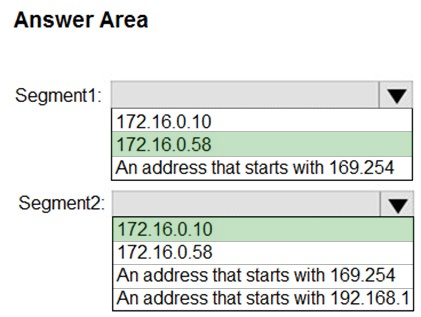You have a computer that is configured as shown in the following exhibit.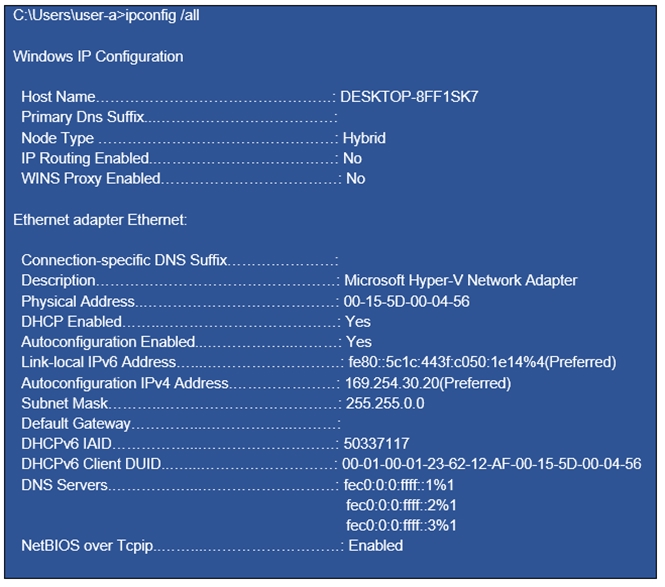
What can the computer connect to?
Answer:
C
The computer has IPv4 address of 169.254.30.20. 169.254.x.x is an automated APIPA address.
Your network contains an Active Directory domain named contoso.com.
A user named User1 has a personal computer named Computer1 that runs Windows 10 Pro. User1 has a VPN connection to the corporate network.
You need to ensure that when User1 connects to the VPN, network traffic uses a proxy server located in the corporate network. The solution must ensure that
User1 can access the Internet when disconnected from the VPN.
What should you do?
Answer:
D
In the Properties of the VPN you can add a proxy setting. The proxy setting will only be active when the user connects to the VPN.
You deploy 100 computers that run Windows 10. Each computer has a cellular connection and a Wi-Fi connection.
You need to prevent the computers from using the cellular connection unless a user manually connects to the cellular network.
What should you do?
Answer:
C
Reference:
https://support.microsoft.com/en-za/help/10739/windows-10-cellular-settings
Note: This question is part of a series of questions that present the same scenario. Each question in the series contains a unique solution that might meet the stated goals. Some question sets might have more than one correct solution, while others might not have a correct solution.
After you answer a question in this section, you will NOT be able to return to it. As a result, these questions will not appear in the review screen.
You have a laptop named Computer1 that runs Windows 10.
When in range, Computer1 connects automatically to a Wi-Fi network named Wireless1.
You need to prevent Computer1 from automatically connecting to Wireless1.
Solution: From a command prompt, you run netsh wlan delete profile name="Wireless1".
Does this meet the goal?
Answer:
A
Reference:
https://lifehacker.com/remove-wi-fi-profiles-from-windows-8-1-from-the-command-1449954864
Note: This question is part of a series of questions that present the same scenario. Each question in the series contains a unique solution that might meet the stated goals. Some question sets might have more than one correct solution, while others might not have a correct solution.
After you answer a question in this section, you will NOT be able to return to it. As a result, these questions will not appear in the review screen.
You have a laptop named Computer1 that runs Windows 10.
When in range, Computer1 connects automatically to a Wi-Fi network named Wireless1.
You need to prevent Computer1 from automatically connecting to Wireless1.
Solution: From the Services console, you disable the Link-Layer Topology Discovery Mapper service.
Does this meet the goal?
Answer:
B
Link-Layer Topology Discovery is used by their Network Map feature to display a graphical representation of the local area network (LAN) or wireless LAN
(WLAN), to which the computer is connected.
Reference:
https://en.wikipedia.org/wiki/Link_Layer_Topology_Discovery
Note: This question is part of a series of questions that present the same scenario. Each question in the series contains a unique solution that might meet the stated goals. Some question sets might have more than one correct solution, while others might not have a correct solution.
After you answer a question in this section, you will NOT be able to return to it. As a result, these questions will not appear in the review screen.
You have a laptop named Computer1 that runs Windows 10.
When in range, Computer1 connects automatically to a Wi-Fi network named Wireless1.
You need to prevent Computer1 from automatically connecting to Wireless1.
Solution: From the properties of the Wi-Fi adapter, you disable Link-Layer Topology Discovery Responder.
Does this meet the goal?
Answer:
B
Link-Layer Topology Discovery is used by their Network Map feature to display a graphical representation of the local area network (LAN) or wireless LAN
(WLAN), to which the computer is connected.
Reference:
https://en.wikipedia.org/wiki/Link_Layer_Topology_Discovery
Your network contains an Active Directory domain named contoso.com. The domain contains two computers named Computer1 and Computer2 that run Windows
10.
On Computer1, you need to run the Invoke-Command cmdlet to execute several PowerShell commands on Computer2.
What should you do first?
Answer:
A
Reference:
https://docs.microsoft.com/en-us/powershell/module/microsoft.powershell.core/enable-psremoting?view=powershell-6
You have a computer named Computer1 that runs Windows 10.
You are troubleshooting connectivity issues on Computer1.
You need to view the remote addresses to which Computer1 has active TCP connections.
Which tool should you use?
Answer:
C
HOTSPOT -
Your office has a dedicated wireless network for guests.
You plan to provide access cards that will have a QR code for guests. The QR code will link to a network configuration file stored on a publicly accessible website and provide the wireless network settings for Windows 10 devices.
Which tool should you use to create the configuration file and which file type should you use for the configuration file? To answer, select the appropriate options in the answer area.
NOTE: Each correct selection is worth one point.
Hot Area: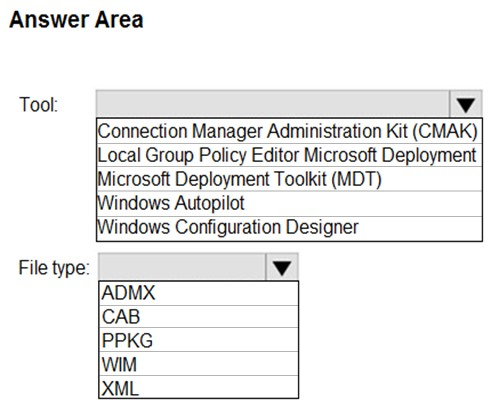
Answer:
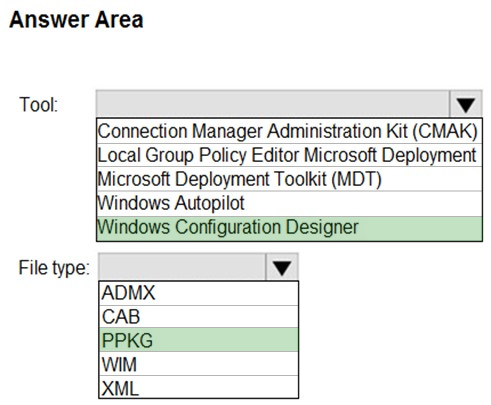
Reference:
https://docs.microsoft.com/en-us/windows/configuration/provisioning-packages/provisioning-packages
HOTSPOT -
Your network contains the segments shown in the following table.
You have a computer that runs Windows 10.
The network interface of the computer is configured as shown in the exhibit. (Click the Exhibit tab.)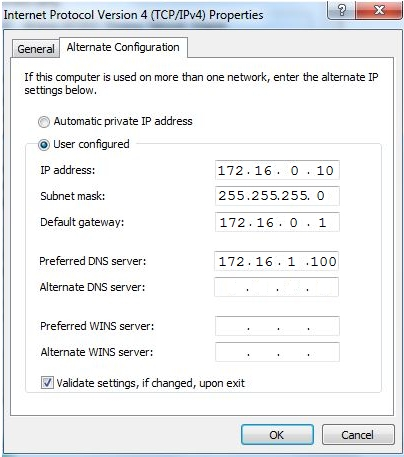
You need to identify which IP address the computer will have on the network when the computer connects to the segments.
Which IP address should you identify for each segment? To answer, select the appropriate options in the answer area.
NOTE: Each correct selection is worth one point.
Hot Area: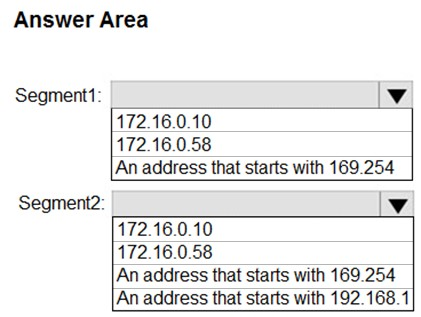
Answer:
